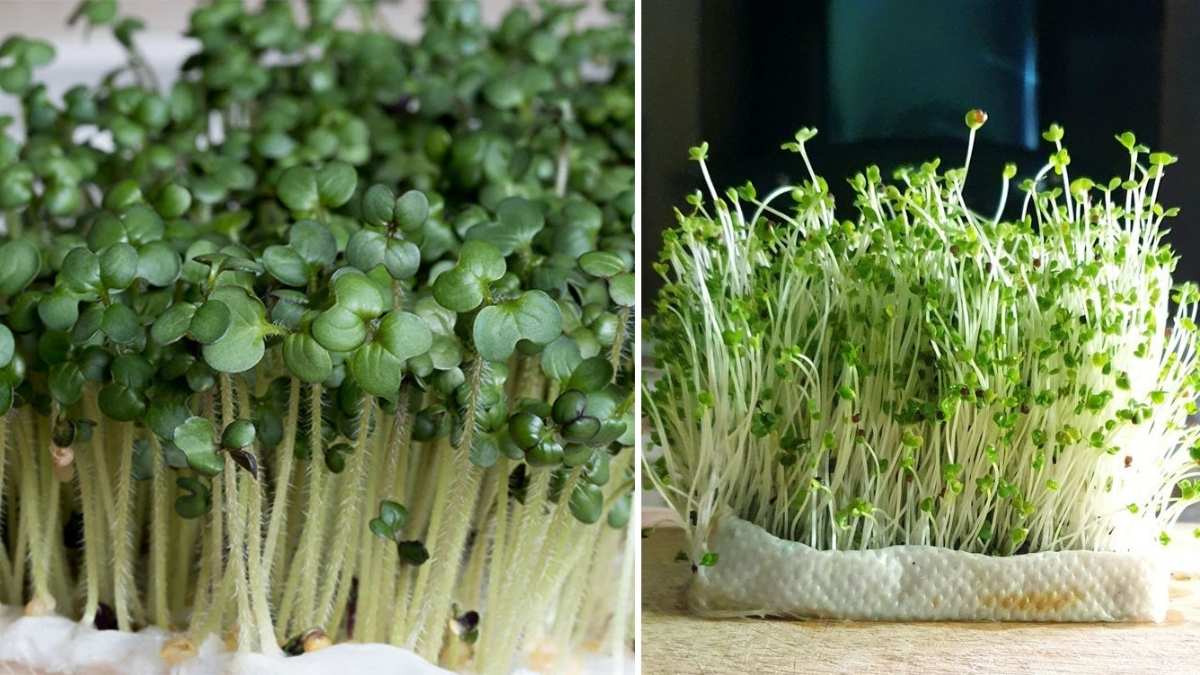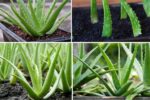Mustard microgreens are tiny, flavorful plants that pack a punch in terms of taste and nutrition. Known for their spicy flavor, these microgreens are often used in salads, sandwiches, and even smoothies. Growing them at home is easy, affordable, and can be done in a small space, making it perfect for urban dwellers or anyone looking to add a nutritious boost to their meals. In this guide, we’ll explore how to grow mustard microgreens at home, what they offer in terms of health benefits, and the best methods to harvest them.
Why Choose Mustard Microgreens?
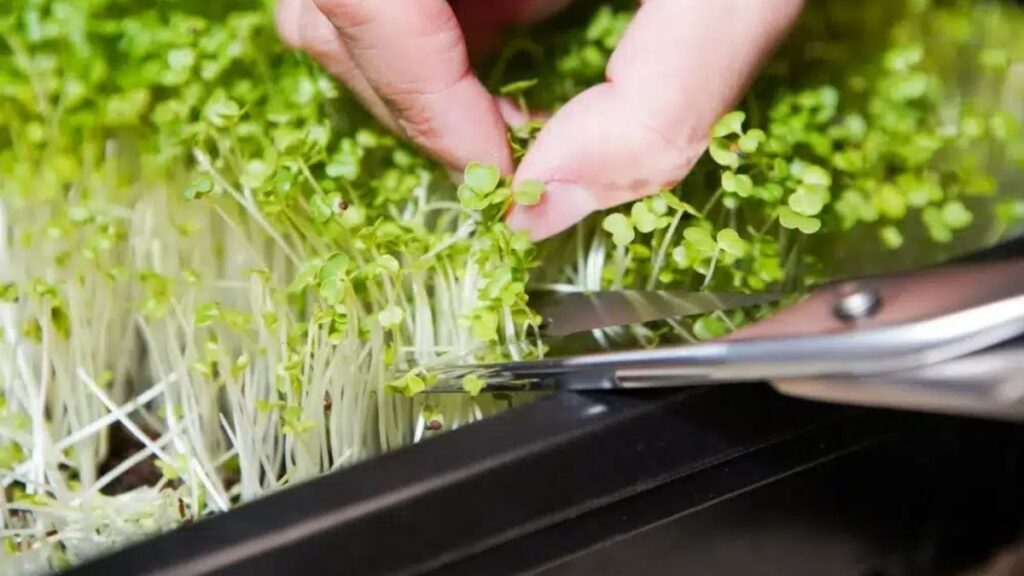
Mustard microgreens are rich in vitamins, minerals, and antioxidants, making them a powerhouse of nutrients. They are an excellent source of vitamin C, vitamin A, calcium, and iron. These tiny greens are also packed with fiber, which supports digestion and overall gut health. The best part? Mustard microgreens have a spicy kick, similar to horseradish or wasabi, which adds a bold flavor to any dish.
What You Need to Grow Mustard Microgreens at Home
Before you start, gather the following supplies to grow mustard microgreens:
- Mustard Seeds: Choose high-quality, non-GMO mustard seeds. You can find them at garden centers or online.
- Growing Tray: A shallow, flat tray with drainage holes is ideal for growing microgreens.
- Soil: A light, well-draining potting mix works best. Avoid garden soil as it can be too heavy and may cause poor growth.
- Watering Can: A gentle watering can or spray bottle to keep the soil moist.
- Grow Light or Natural Light: Mustard microgreens need at least 4–6 hours of light per day. A sunny windowsill or a grow light will work well.
- Cover: You will need a cover for the growing tray to help keep humidity high during germination.
Step-by-Step Guide to Growing Mustard Microgreens
Step 1: Prepare the Tray
Start by filling your growing tray with soil. Ensure that the soil is level and compact, but not too tightly packed. You want it to be loose enough to allow the roots to grow freely. Leave about half an inch of space from the top of the soil to the edge of the tray to prevent water from spilling over when you water the seeds.
Step 2: Soak the Mustard Seeds
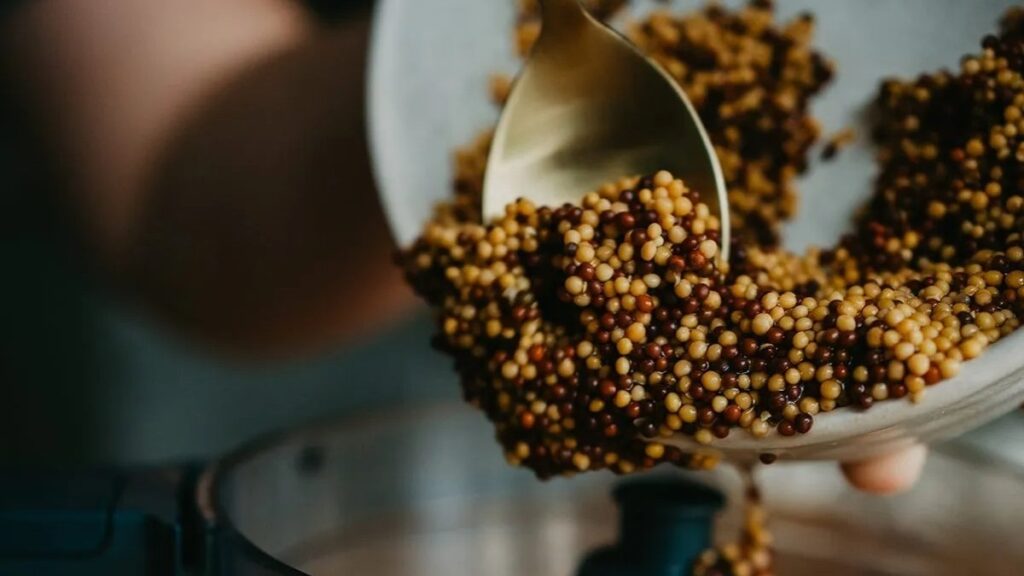
Soaking the seeds helps speed up the germination process. Place your mustard seeds in a bowl and cover them with water. Let them soak for about 6-8 hours or overnight. This ensures that the seeds will start growing as soon as they hit the soil.
Step 3: Sowing the Seeds
Once your seeds are soaked, spread them evenly over the surface of the soil. You don’t need to cover them with more soil, as mustard microgreens need light to germinate. Try to spread the seeds as evenly as possible to avoid overcrowding, but don’t worry if they are a bit close together they will grow just fine.
Step 4: Cover and Water
After sowing, gently spray the seeds with water using a fine mist or watering can. Then, cover the tray with a clear plastic lid, a plastic wrap, or even a piece of cardboard to maintain humidity. Keep the tray in a warm, well-lit spot, away from direct sunlight, which can dry out the soil. The temperature should be around 65–75°F (18–24°C) for optimal germination.
Step 5: Germination and Growth
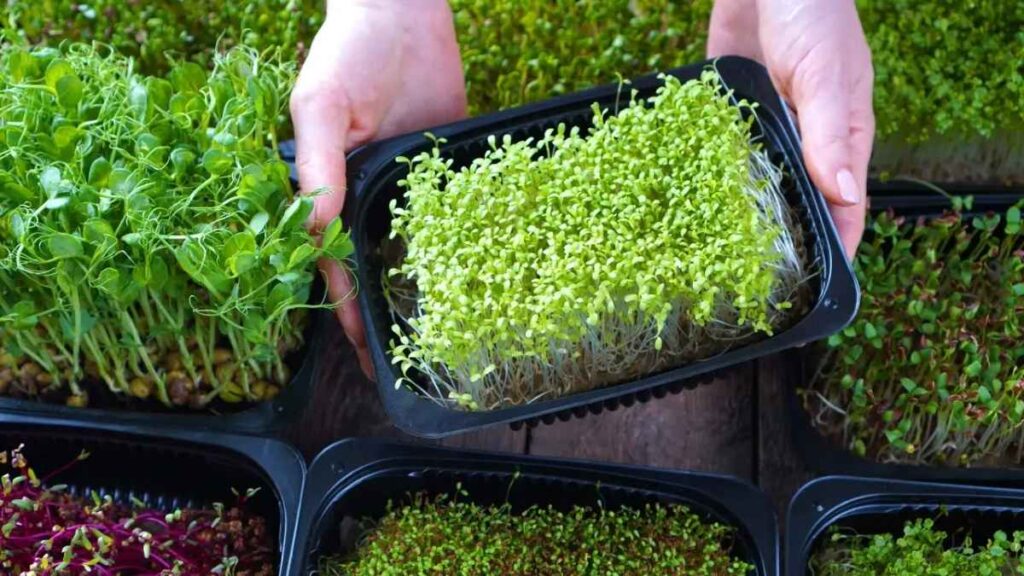
In about 2–3 days, you should start to see the mustard seeds sprouting. Once the seeds have germinated and the first green leaves (cotyledons) appear, remove the cover. From this point, the microgreens will start growing rapidly. Continue to mist them regularly to keep the soil moist, but avoid overwatering.
Step 6: Provide Light
At this stage, it’s important to make sure the microgreens get enough light to grow strong and healthy. If you’re growing them indoors, place the tray near a sunny window where they can get at least 4–6 hours of direct or indirect sunlight each day. If sunlight is limited, consider using a grow light to supplement. LED grow lights work well for microgreens and can be placed a few inches above the tray.
Step 7: Harvesting Mustard Microgreens
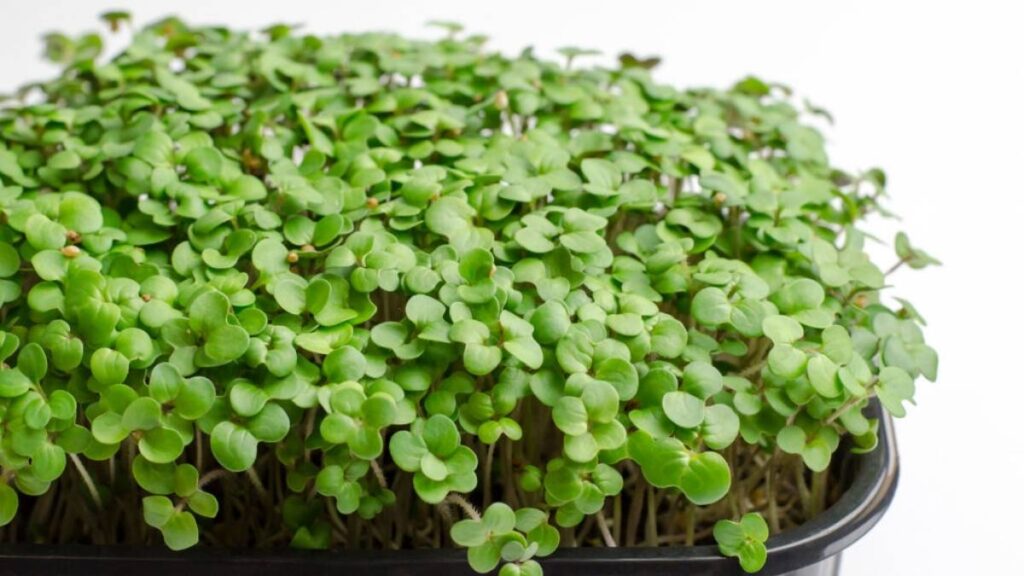
Your mustard microgreens will be ready for harvest in about 7–10 days after sowing, depending on the growing conditions. They should have developed their first true leaves, which are the signature jagged, mustard-like leaves. The best time to harvest is when they are still young and tender, as this is when they have the most flavor and nutrients.
To harvest, simply use a sharp pair of scissors or kitchen shears to cut the microgreens just above the soil level. Be gentle so you don’t disturb the roots too much. If you want to harvest multiple times, you can leave the roots in the soil and allow the microgreens to regrow, but the second harvest will be smaller.
Tips for Growing Mustard Microgreens Successfully
- Water Carefully: Keep the soil moist, but not soggy. Overwatering can lead to mold growth and root rot.
- Air Circulation: Ensure there’s enough airflow around your microgreens. Crowding them too much or leaving them in a humid, stagnant environment can cause mold.
- Clean Your Equipment: Always clean your trays and tools before starting a new batch to prevent the spread of disease or mold.
- Succession Planting: If you want a continuous supply of mustard microgreens, consider planting new seeds every 2–3 days. This way, you’ll always have fresh microgreens ready to harvest.
Health Benefits of Mustard Microgreens
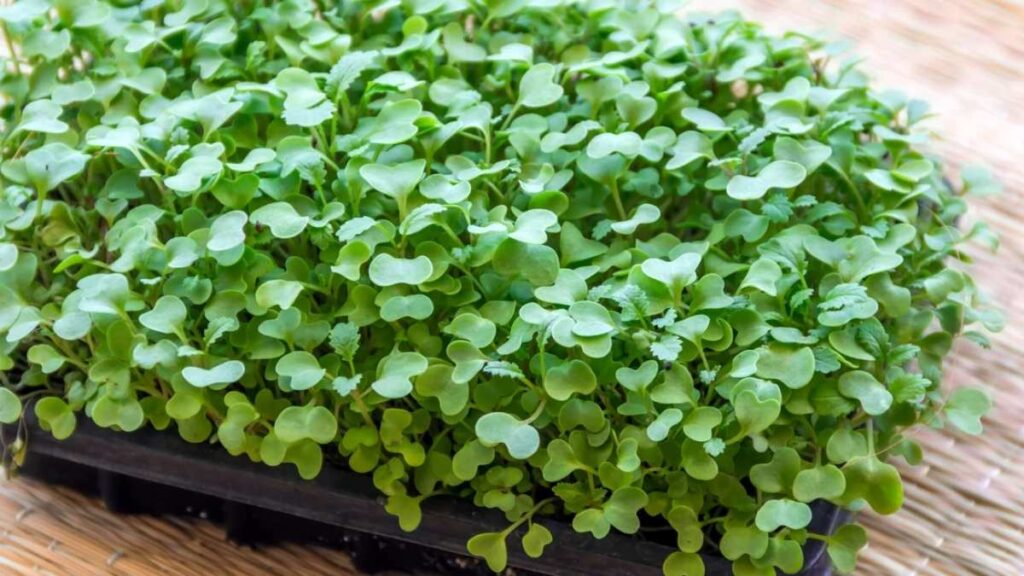
Mustard microgreens are packed with nutrients that offer several health benefits. They are a rich source of antioxidants, which help fight free radicals in the body and reduce the risk of chronic diseases. The high vitamin C content supports immune health, while vitamin A promotes healthy skin and vision. The iron in mustard microgreens is vital for red blood cell production, and calcium helps strengthen bones.
Additionally, mustard microgreens are a low-calorie food, making them perfect for anyone looking to add more nutrition without adding extra calories. Their spicy flavor is also believed to aid in digestion by stimulating saliva and gastric juices.
Conclusion
Growing mustard microgreens at home is an easy, rewarding way to add flavor and nutrition to your meals. With minimal space, time, and effort, you can enjoy fresh, spicy greens right from your kitchen. Whether you’re a seasoned gardener or a beginner, mustard microgreens are a great option to try. They’re quick to grow, and their health benefits make them a valuable addition to any diet. So why not give it a go? Your taste buds and your body will thank you.
